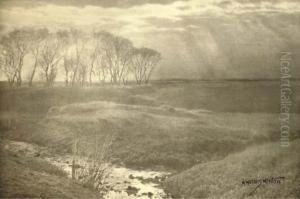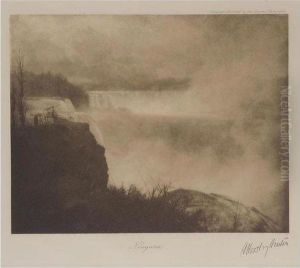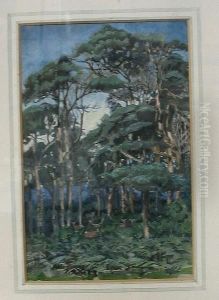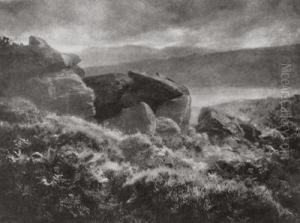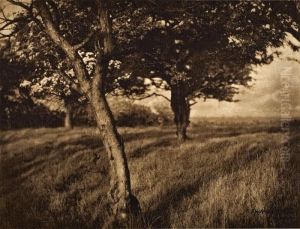Alfred Horsley Hinton Paintings
Alfred Horsley Hinton was an English photographer and author who played a significant role in the Pictorialism movement in photography during the late 19th and early 20th centuries. Born on October 25, 1863, in London, Hinton developed an interest in the arts at a young age, which eventually led him to explore the medium of photography. He is known for his evocative landscapes and for advocating the idea that photography should be recognized as an art form in its own right.
Hinton's approach to photography was influenced by the impressionist painters of his time. He believed that a photograph, like a painting, should express an artistic vision rather than just mechanically record reality. To achieve this, he often used soft focus and played with light and composition to create atmospheric and emotive images. Hinton's work was characterized by its attention to the subtleties of natural light and the English countryside, often focusing on pastoral and rustic scenes that conveyed a sense of tranquility and timeless beauty.
As a writer, Hinton contributed to numerous photography publications, sharing his ideas about the artistic potential of photography. He was an editor at the Amateur Photographer magazine and authored several books on photography, including 'Practical Pictorial Photography' and 'The Art of the Photographer'. His writings and practical guides were instrumental in shaping the practices of many photographers of his era.
Hinton was also actively involved with the Linked Ring Brotherhood, an exclusive society that aimed to elevate photography as a fine art rather than a mere technical craft. Through exhibitions and publications, the Linked Ring Brotherhood promoted creative and experimental approaches to photography, which aligned closely with Hinton's own philosophies.
Tragically, Alfred Horsley Hinton's life was cut short when he died on February 25, 1908, at the age of 44. Despite his relatively brief career, Hinton's impact on the field of photography was substantial. He left behind a legacy that continues to inspire photographers who value the artistic expression within the photographic medium. His works are a testament to the power of photography as a form of art and continue to be studied and admired for their beauty and pioneering spirit.
